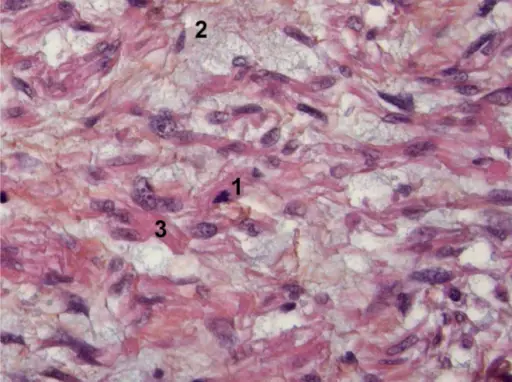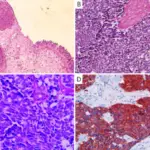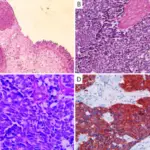Sarcoma of the bladder is a variant of urothelial carcinoma that is morphologically indistinguishable from sarcoma.
What is the Pathology of Sarcoma of the Bladder?
The pathology of sarcoma of the bladder is:
-Etiology: The cause of the sarcoma of the bladder has a malignant clonal origin, with epithelial and mesenchymal differentiation.
-Genes involved: FOXC2, SNAIL, and ZEB1 TERT C228T TP53.
-Pathogenesis: The sequence of events that lead to the sarcoma of the bladder is the TERT C228T promoter mutations in 35% of sarcomatoid carcinoma result in epithelial and mesenchymal differentiation.
-Morphology: The morphology associated with sarcoma of the bladder shows a gray fleshy cut surface with infiltrative margins similar to sarcoma in appearance.
-Histology: The histology associated with sarcoma of the bladder shows most common component is undifferentiated high-grade spindle cell sarcoma, sarcomatoid areas admixed with conventional high-grade urothelial carcinoma.
How does Sarcoma of the Bladder Present?
Patients with sarcoma of the bladder typically affect males two or three times more than females in 45 to 82 years of age. The symptoms, features, and clinical findings associated with sarcoma of the Bladder include gross hematuria, flank pain, an abdominal mass, and hydronephrosis, similar to those of conventional urothelial tumors.
How is Sarcoma of the Bladder Diagnosed?
Sarcoma of the bladder is diagnosed through cystoscopy, CT scan, MRI, and biopsy.
How is Sarcoma of the Bladder Treated?
Sarcoma of the bladder treatment is not standard due to rarity. It is chemotherapy-resistant.
What is the Prognosis of Sarcoma of the Bladder?
The prognosis of the sarcoma of the bladder is poor, as it frequently presents at an advanced stage and is associated with a worse overall survival when compared with pure urothelial carcinoma.



